



 下载产品说明书
下载产品说明书 下载SDS
下载SDS 用小程序,查商品更便捷
用小程序,查商品更便捷



 收藏
收藏
 对比
对比 咨询
咨询Scientific Data
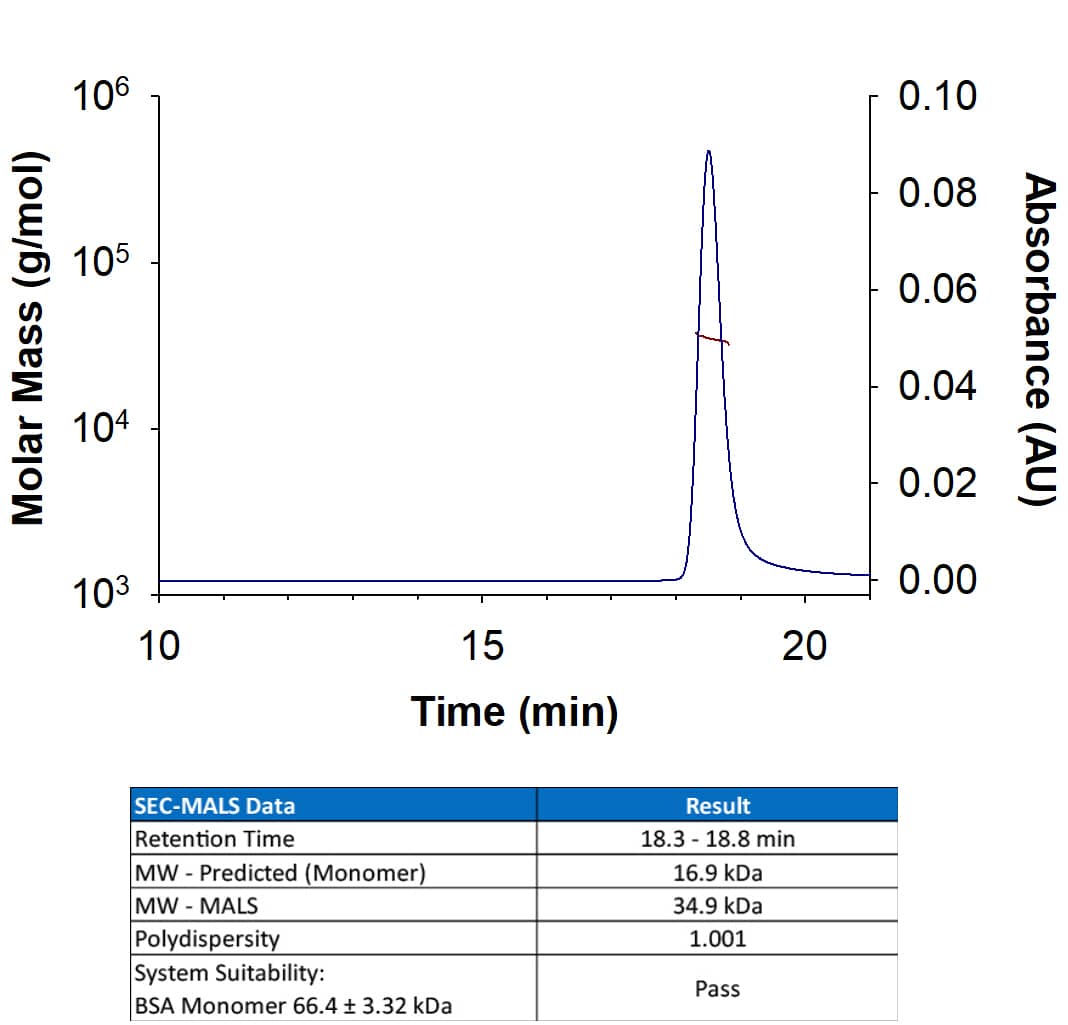 View Larger
View LargerRecombinant Human IFN-gamma (Catalog # 285-IF) has a molecular weight (MW) of 34.9 kDa as analyzed by SEC-MALS, suggesting that this protein is a homodimer. MW may differ from predicted MW due to post-translational modifications (PTMs) present (i.e. Glycosylation).
 View Larger
View Larger1 μg/lane of Recombinant Human IFN-gamma was resolved with SDS-PAGE under reducing (R) conditions and visualized by silver staining, showing a single band at 17 kDa.
 View Larger
View LargerRecombinant Human IFN-gamma (Catalog # 285‑IF) demonstrates anti-viral activity in HeLa human cervical epithelial carcinoma cells infected with encephalomyocarditis (EMC) virus. The activity is over 2-fold greater than the top competitor's IFN-gamma.
Carrier Free
CF stands for Carrier Free (CF). We typically add Bovine Serum Albumin (BSA) as a carrier protein to our recombinant proteins. Adding a carrier protein enhances protein stability, increases shelf-life, and allows the recombinant protein to be stored at a more dilute concentration. The carrier free version does not contain BSA.
In general, we advise purchasing the recombinant protein with BSA for use in cell or tissue culture, or as an ELISA standard. In contrast, the carrier free protein is recommended for applications, in which the presence of BSA could interfere.
285-IF
| Formulation | Lyophilized from a 0.2 μm filtered solution in Sodium Succinate, Mannitol and Tween® 80 with BSA as a carrier protein. |
| Reconstitution | Reconstitute at 0.2 mg/mL in sterile, deionized water. |
| Shipping | The product is shipped at ambient temperature. Upon receipt, store it immediately at the temperature recommended below. |
| Stability & Storage: | Use a manual defrost freezer and avoid repeated freeze-thaw cycles.
|
285-IF/CF
| Formulation | Lyophilized from a 0.2 μm filtered solution in Sodium Succinate, Mannitol and Tween® 80. |
| Reconstitution | Reconstitute at 0.2 mg/mL in sterile, deionized water. |
| Shipping | The product is shipped at ambient temperature. Upon receipt, store it immediately at the temperature recommended below. |
| Stability & Storage: | Use a manual defrost freezer and avoid repeated freeze-thaw cycles.
|
Recombinant Human IFN-gamma Protein Summary
Product Specifications
Gln24-Gln166 with an N-terminal Met
Analysis

Background: IFN-gamma
Interferon-gamma (IFN-gamma ), also known as type II or immune interferon, exerts a wide range of immunoregulatory activities and is considered to be the prototype proinflammatory cytokine (1, 2). Mature human IFN-gamma exists as a non-covalently linked homodimer of 20-25 kDa variably glycosylated subunits (3). It shares 90% amino acid (aa) sequence identity with rhesus IFN-gamma, 59%‑64% with bovine, canine, equine, feline, and porcine IFN‑ gamma, and 37%‑43% with cotton rat, mouse, and rat IFN-gamma. IFN-gamma dimers bind to IFN-gamma RI ( alpha subunits) which then interact with IFN-gamma RII ( beta subunits) to form the functional receptor complex of two alpha and two beta subunits. Inclusion of IFN-gamma RII increases the binding affinity for ligand and the efficiency of signal transduction (4, 5). IFN-gamma is produced by a variety of immune cells under inflammatory conditions, notably by T cells and NK cells (6). It plays a key role in host defense by promoting the development and activation of Th1 cells, chemoattraction and activation of monocytes and macrophages, up‑regulation of antigen presentation molecules, and immunoglobulin class switching in B cells. It also exhibits antiviral, antiproliferative, and apoptotic effects (6, 7). In addition, IFN-gamma functions as an anti-inflammatory mediator by promoting the development of regulatory T cells and inhibiting Th17 cell differentiation (8, 9). The pleiotropic effects of IFN-gamma contribute to the development of multiple aspects of atherosclerosis (7).
- Billiau, A. and P. Matthys (2009) Cytokine Growth Factor Rev. 20:97.
- Pestka, S. et al. (2004) Immunol. Rev. 202:8.
- Gray, P.W. and D.V. Goeddel (1982) Nature 298:859.
- Marsters, S.A. et al. (1995) Proc. Natl. Acad. Sci. 92:5401.
- Krause, C.D. et al. (2000) J. Biol. Chem. 275:22995.
- Schroder, K. et al. (2004) J. Leukoc. Biol. 75:163.
- McLaren, J.E. and D.P. Ramji (2009) Cytokine Growth Factor Rev. 20:125.
- Muhl, H. and J. Pfeilschifter (2003) Int. Immunopharmacol. 3:1247.
- Kelchtermans, H. et al. (2008) Trends Immunol. 29:479.


参考图片
1 μg/lane of Recombinant Human IFN-gamma was resolved with SDS-PAGE under reducing (R) conditions and visualized by silver staining, showing a single band at 17 kDa.
Recombinant Human IFN-gamma (Catalog # 285‑IF) demonstrates anti-viral activity in HeLa human cervical epithelial carcinoma cells infected with encephalomyocarditis (EMC) virus. The ED50 for this effect is typically 0.15‑0.75 ng/mL.




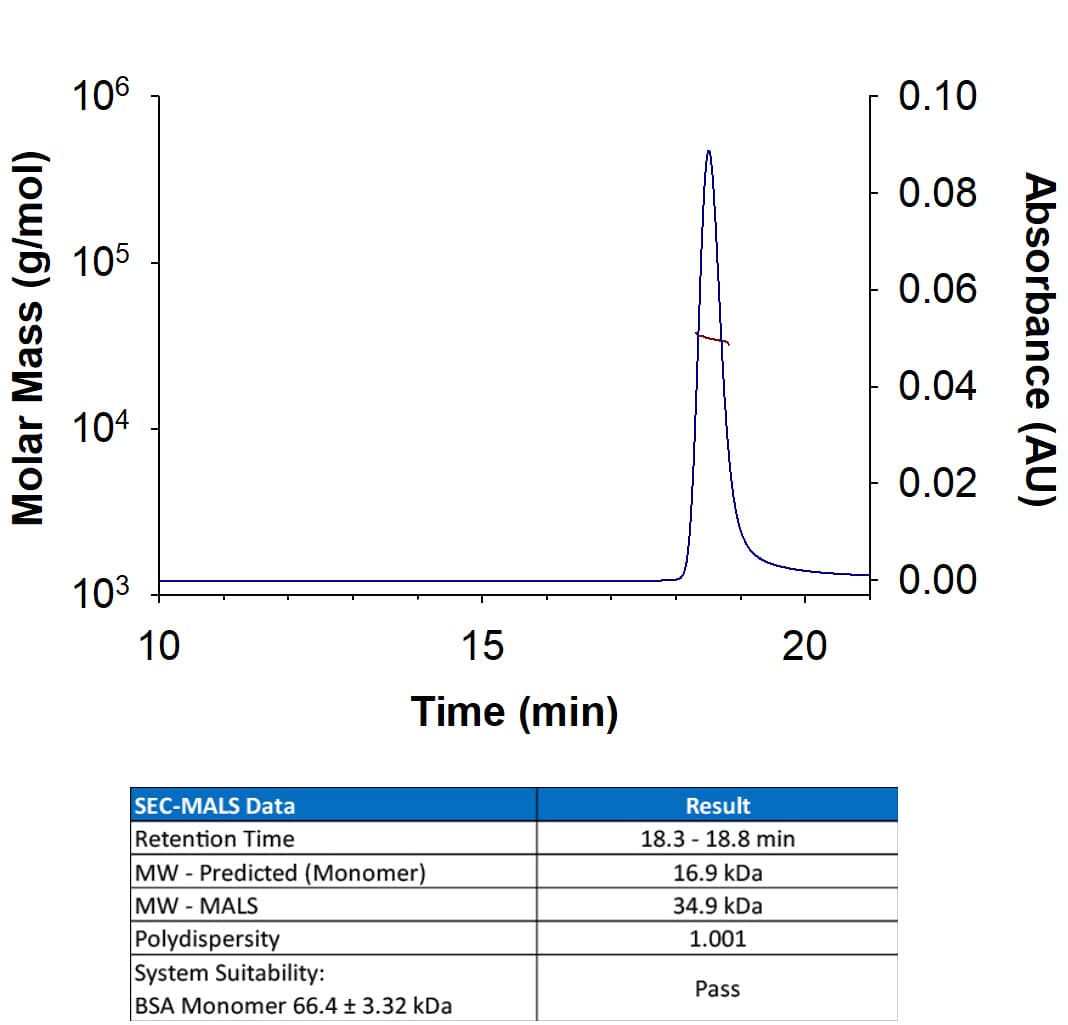
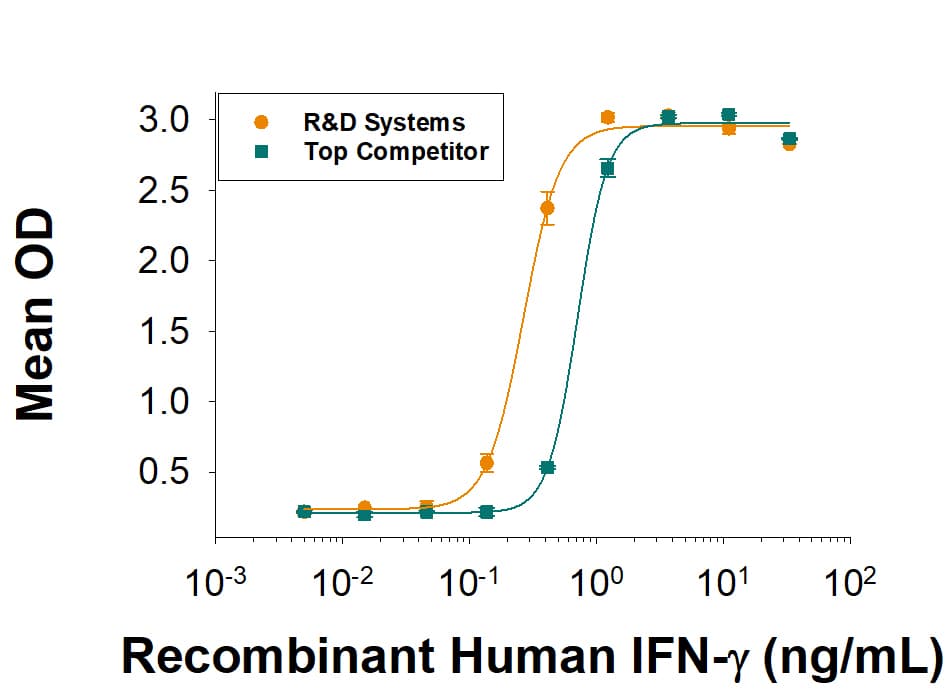
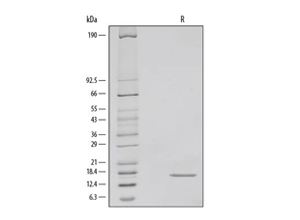

 危险品化学品经营许可证(不带存储) 许可证编号:沪(杨)应急管危经许[2022]202944(QY)
危险品化学品经营许可证(不带存储) 许可证编号:沪(杨)应急管危经许[2022]202944(QY) 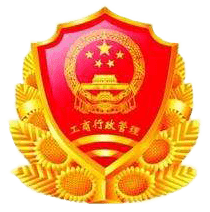 营业执照(三证合一)
营业执照(三证合一)